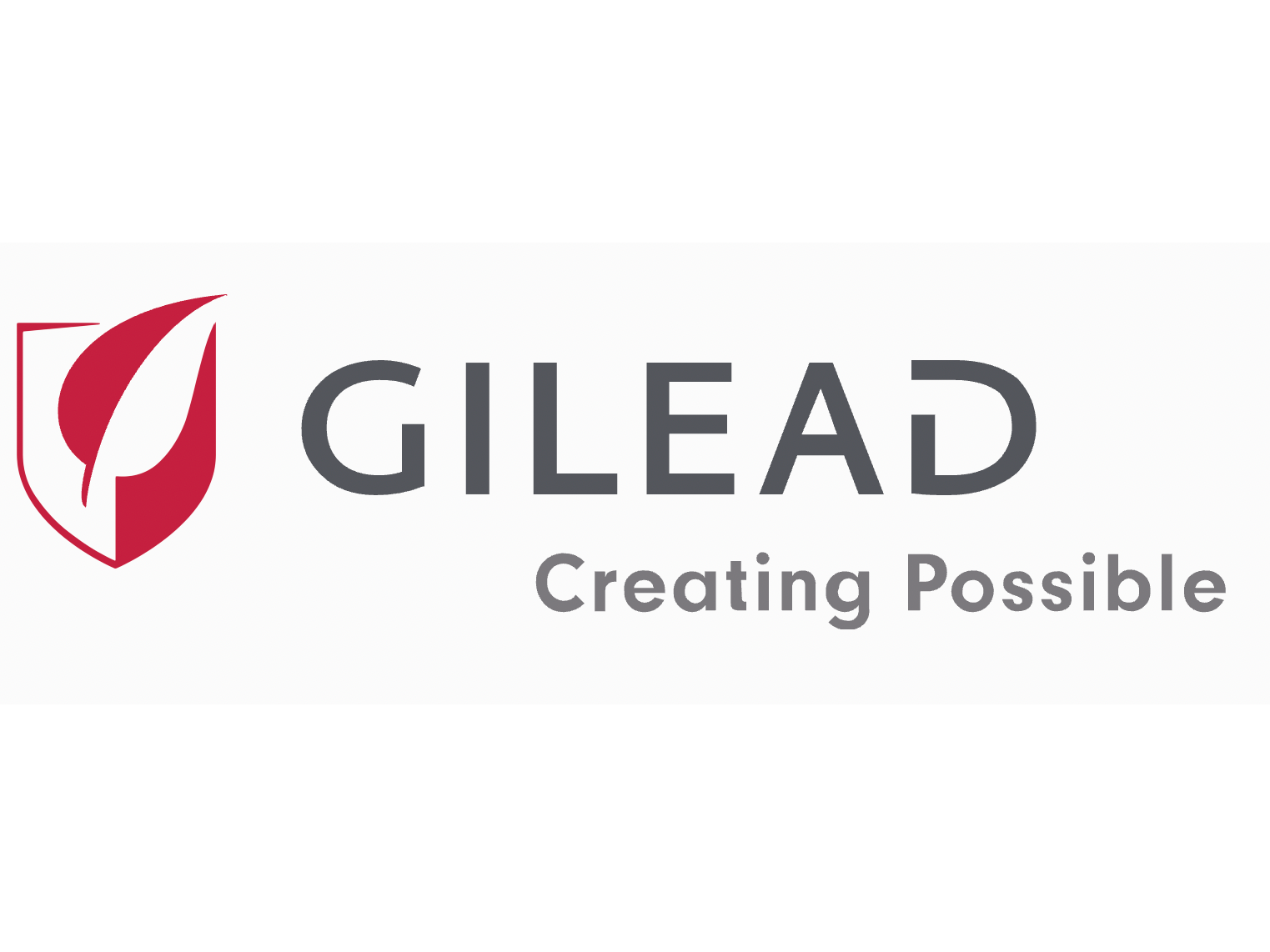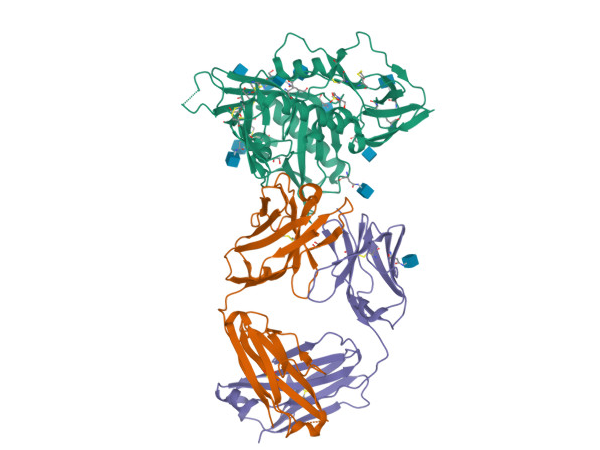Drug information
Not provided
Teropavimab and Zinlirvimab
Not provided
Biotherapeutic
Teropavimab (GS-5423; 3BNC117-LS) and zinlirvimab (GS-2872; 10-1074-LS) are a long-acting combination of the broadly neutralising antibodies (bNAbs) 3BNC117 and 10-1074 currently in clinical development for the treatment of HIV-1 infection. The crystallisable fragment domains of both teropavimab and zinlirvimab contain two directed amino acid substitutions termed “LS” (residues N434S and M428L) resulting in long-acting bNAbs with improved efficacy and half-life. Teropavimab functions by targeting the CD4-binding site of the HIV-1 envelope glycoprotein gp120, while zinlirvimab targets the HIV-1 envelope V3 glycan supersite. These interactions mechanistically disrupt the initial entry of HIV-1 virions into the host CD4+ cell, which is an essential step in HIV infection.
Unknown
Unknown
Therapeutic area(s)
- HIV
- Treatment
Administration route
Intravenous, Subcutaneous
Associated long-acting platforms
Broadly neutralising monoclonal antibody
Use of drug
- Administered by a nurse
- Administered by a specialty health worker
Not provided
Dosage
Not provided
Not provided
Not provided
Not provided
Not provided
Not provided
Formulations
Compare
Cabotegravir and Lenacapavir
Lenacapavir Once-Yearly
MK-8591D (Islatravir and Lenacapavir)
Teropavimab and Zinlirvimab
Associated technologies
Not provided
Comment & Information
Developer(s)

Gilead Sciences, Inc. is a multinational biopharmaceutical company that develops and manufactures innovative medicines for life-threatening diseases, including anti-viral therapeutics for HIV/AIDS, Hepatitis B, Hepatitis C and Covid-19. Headquartered in Foster City, California, Gilead was originally founded in 1987 and is currently listed on both the S&P 500 and the NASDAQ Biotechnology Index.
Drug structure
Scale-up and manufacturing prospects
Production scale up and manufacturing requirements for therapeutic monoclonal antibody products are primarily related to formulation stability, pharmacokinetic suitability and maintenance of quality attributes. The industrial manufacture of high-concentration broadly neutralising antibody (bNAb) formulations for parenteral administration can introduce production challenges regarding aggregation propensity and formulation viscosity. Exploratory process optimisations such as bNAb co-formulation and multi-specific antibody composition have the potential to reduce overall manufacturing costs.
Industrial bioreactor vessel with a production volume capacity of between 5-25kL. Continuous disc stack centrifuges for bioreactor harvesting with subsequent membrane and depth filtration for supernatant clarification. Protein A chromatography or other suitable affinity capture apparatus followed by two chromatographic polishing steps such as cation- and anion-exchange. Ultrafiltration membrane system to concentrate and formulate the final product.
Biological activity of bNAbs is highly dependant on their chemical, conformational and structural stability. Reduced glycosylation of bNAbs during manufacture and chemical degradation processes such as deamidation can result in increased aggregation, loss of activity and diminished solubility. Degradation may occur at any stage throughout the manufacturing process including bioprocessing, purification, product delivery and storage. Considerations to increase formulation stability may include pH optimisation and the addition of suitable excipients (e.g. surfactants, stabilizers and buffers).
Formulation characterisation for single-entity bNAb production include capillary isoelectric focusing and ion-exchange chromatography for identification of post-translational modifications, subvisible particle quantitation, thermal DSC, size-exclusion chromatography for measurement of concentration dependent aggregation rates and capillary electrophoresis for antibody fragmentation and clipping. Co-formulated bNAbs in mixture may utilise SE-HPLC, capillary electrophoresis sodium dodecyl sulphate, dynamic light scattering, microflow imaging and multi-attribute method mass spectrometry analysis.
Excipients
Not provided
Not provided
Not provided
Delivery device(s)
No delivery device
Zinlirvimab+Teropamivimab combination
Zinlirvimab variants + combination with Teropamivimab (Heavy chain e.g. SEQ 59-61)
WO2020056145
Combination of active substances
The Rockefeller University
Not provided
September 12, 2039
Filed in China, India, Us, EP
Zinlirvimab- Broadly neutralising anti-HIV antibodies
The invention relates to anti-HIV antibodies. Also disclosed are related methods and compositions.
WO2014063059
Active substance
The Rockefeller University; California Institute of Technology
Not provided
October 18, 2033
Granted in China, US, EAPO, EP
Teropavimab - HIV neutralizing antibodies and methods of use thereof
The invention provides broadly neutralizing antibodies directed to epitopes of Human Immunodeficiency Virus, or HIV. The invention further provides compositions containing HIV antibodies used for prophylaxis, and methods for diagnosis and treatment of HIV infection. Claims include antibody comprising aa 1-112 teropavimab H chain and 1-89 of L chain
WO2012158948
Active substance
The Rockefeller University; California Institute of Technology
Not provided
May 17, 2032
Granted in US, EAPO, EP
Publications
Gautam, R., Nishimura, Y., Gaughan, N. et al. A single injection of crystallizable fragment domain–modified antibodies elicits durable protection from SHIV infection. Nat Med 24, 610–616 (2018). https://doi.org/10.1038/s41591-018-0001-2
In the absence of an effective and safe vaccine against HIV-1, the administration of broadly neutralizing antibodies (bNAbs) represents a logical alternative approach to prevent virus transmission. Here, we introduced two mutations encoding amino acid substitutions (M428L and N434S, collectively referred to as ‘LS’) into the genes encoding the crystallizable fragment domains of the highly potent HIV-specific 3BNC117 and 10-1074 bNAbs to increase their half-lives and evaluated their efficacy in blocking infection following repeated low-dose mucosal challenges of rhesus macaques (Macaca mulatta) with the tier 2 SHIVAD8-EO. A single intravenous infusion of 10-1074-LS monoclonal antibodies markedly delayed virus acquisition for 18 to 37 weeks (median, 27 weeks), whereas the protective effect of the 3BNC117-LS bNAb was more modest (provided protection for 11–23 weeks; median, 17 weeks). Serum concentrations of the 10-1074-LS monoclonal antibody gradually declined and became undetectable in all recipients between weeks 26 and 41, whereas the 3BNC117-LS bNAb exhibited a shorter half-life. To model immunoprophylaxis against genetically diverse and/or neutralization-resistant HIV-1 strains, a combination of the 3BNC117-LS plus 10-1074-LS monoclonal antibodies was injected into macaques via the more clinically relevant subcutaneous route. Even though the administered mixture contained an amount of each bNAb that was nearly threefold less than the quantity of the single monoclonal antibody in the intravenous injections, the monoclonal antibody combination still protected macaques for a median of 20 weeks. The extended period of protection observed in macaques for the 3BNC117-LS plus 10-1074-LS combination could translate into an effective semiannual or annual immunoprophylaxis regimen for preventing HIV-1 infections in humans.
Mendoza P, Gruell H, Nogueira L, Pai JA, Butler AL, Millard K, Lehmann C, Suárez I, Oliveira TY, Lorenzi JCC, Cohen YZ, Wyen C, Kümmerle T, Karagounis T, Lu CL, Handl L, Unson-O'Brien C, Patel R, Ruping C, Schlotz M, Witmer-Pack M, Shimeliovich I, Kremer G, Thomas E, Seaton KE, Horowitz J, West AP Jr, Bjorkman PJ, Tomaras GD, Gulick RM, Pfeifer N, Fätkenheuer G, Seaman MS, Klein F, Caskey M, Nussenzweig MC. Combination therapy with anti-HIV-1 antibodies maintains viral suppression. Nature. 2018 Sep;561(7724):479-484. DOI: 10.1038/s41586-018-0531-2. Epub 2018 Sep 26. PMID: 30258136; PMCID: PMC6166473.
Individuals infected with HIV-1 require lifelong antiretroviral therapy, because interruption of treatment leads to rapid rebound viraemia. Here we report on a phase 1b clinical trial in which a combination of 3BNC117 and 10-1074, two potent monoclonal anti-HIV-1 broadly neutralizing antibodies that target independent sites on the HIV-1 envelope spike, was administered during analytical treatment interruption. Participants received three infusions of 30 mg kg-1 of each antibody at 0, 3 and 6 weeks. Infusions of the two antibodies were generally well-tolerated. The nine enrolled individuals with antibody-sensitive latent viral reservoirs maintained suppression for between 15 and more than 30 weeks (median of 21 weeks), and none developed viruses that were resistant to both antibodies. We conclude that the combination of the anti-HIV-1 monoclonal antibodies 3BNC117 and 10-1074 can maintain long-term suppression in the absence of antiretroviral therapy in individuals with antibody-sensitive viral reservoirs.
Additional documents
No documents were uploaded
Useful links
There are no additional links
Collaborate for development
Consider on a case by case basis, collaborating on developing long acting products with potential significant public health impact, especially for low- and middle-income countries (LMICs), utilising the referred to long-acting technology
Share technical information for match-making assessment
Provide necessary technical information to a potential partner, under confidentiality agreement, to enable preliminary assessment of whether specific medicines of public health importance in LMICs might be compatible with the referred to long-acting technology to achieve a public health benefit
Work with MPP to expand access in LMICs
In the event that a product using the referred to long-acting technology is successfully developed, the technology IP holder(s) will work with the Medicines Patent Pool towards putting in place the most appropriate strategy for timely and affordable access in low and middle-income countries, including through licensing
